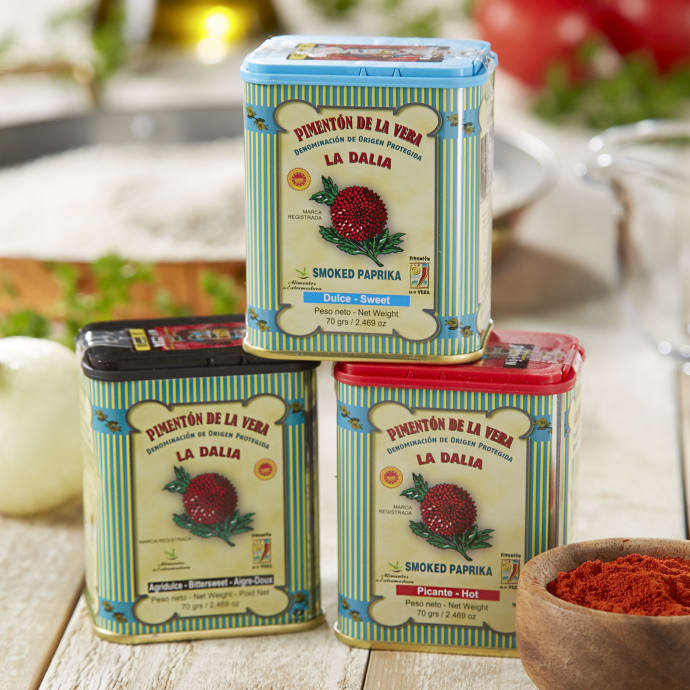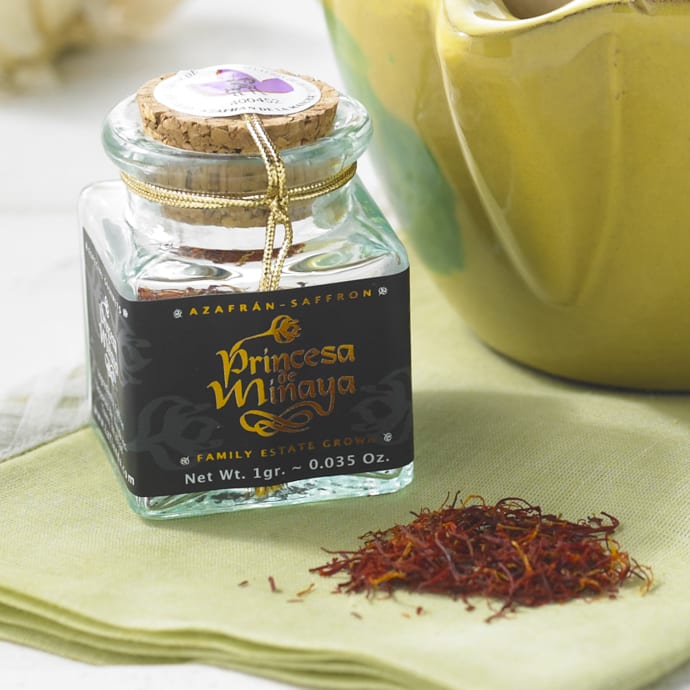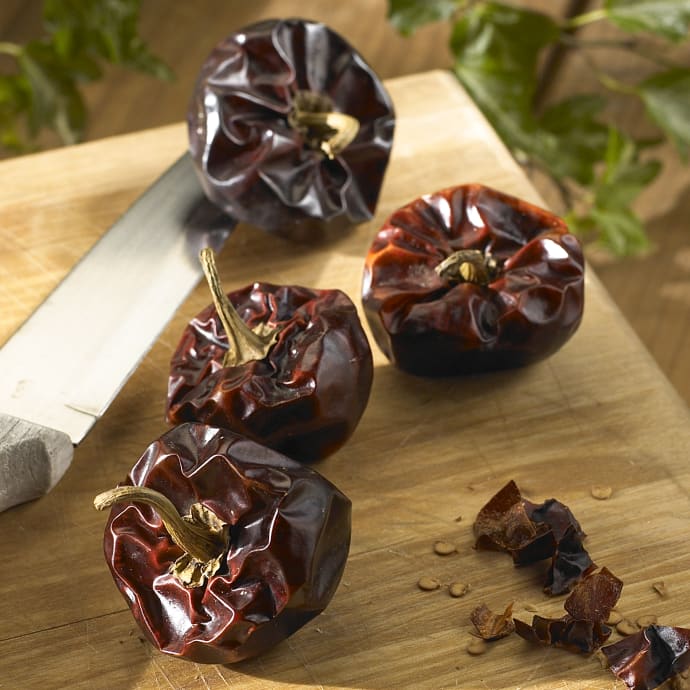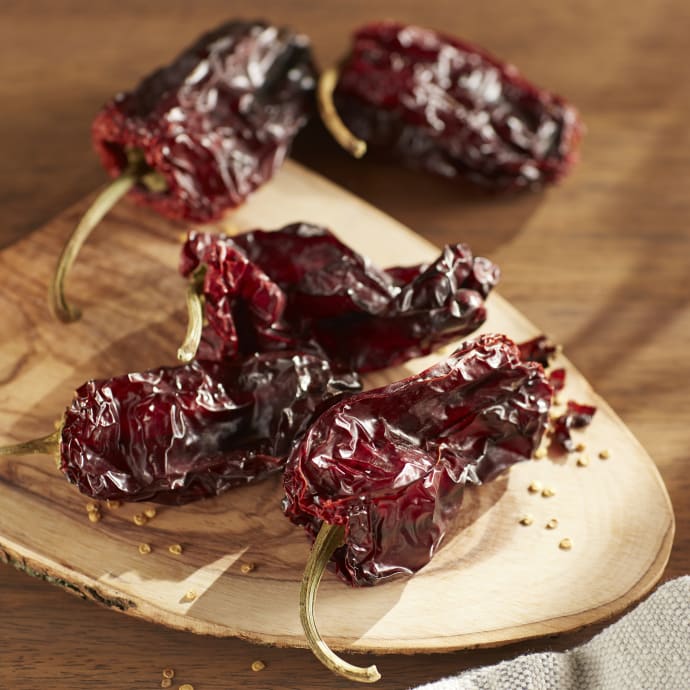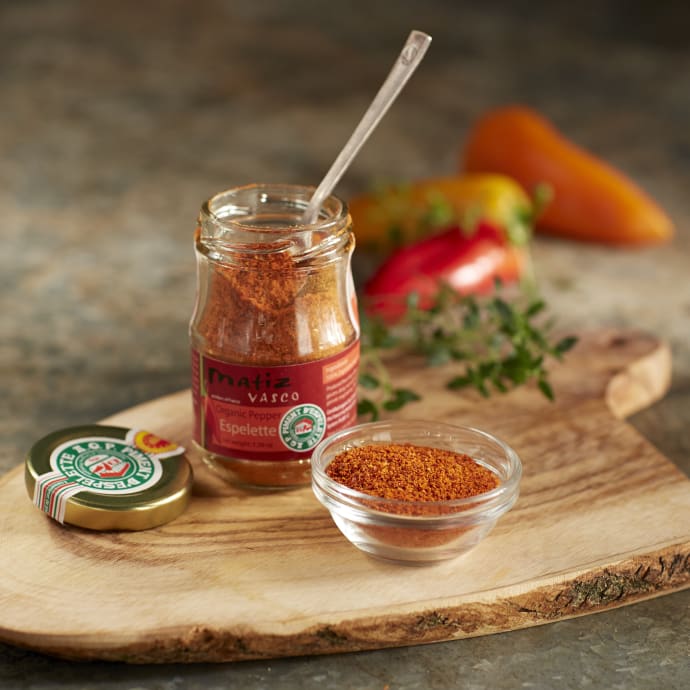
Cooking's new heat wave
The Christian Science Monitor
-
March 24, 2006
Spice racks go global as amateur cooks bring new boldness to the kitchen
Clayton Collins | Staff writer of The Christian Science Monitor
As much as she prized the wide, multiethnic offerings of the big one-stop grocery near her Los Angeles home, Charlotte Beal recently began to feel that something was missing in her culinary life. It needed still more zest, and some personal alchemy.
So a few months ago, the self-described "foodie" - a 30-something former editor for Bon Appétit magazine who researches food trends for the online firm Iconoculture - joined with friends on an excursion. Their goal: Make a powerhouse paella from scratch. "We spent an entire afternoon going to these specialty stores looking for smoked paprika from Spain, pimentón de la vera," Ms. Beal says. "And peppers - you can't just get red peppers, you have to get roasted piquillo peppers."
Her club has since reconvened around an Indian menu, scouring shops for amchoor (mango powder). The group plans to eat its away around the world, and not by way of the local food court. That puts Beal and her friends in the middle of a long-simmering and newly resurgent trend: Many of today's amateur cooks reach confidently for spicier ingredients and greater degrees of difficulty.
Experts credit the influence of burgeoning Latino and other ethnic populations, hotter restaurant fare, television shows (such as Bravo's "Top Chef") that showcase ever more radical fusion, catalog and Internet purveyors of spices and plants, even a post-Katrina diaspora of Cajun cooks.
"To a certain extent it's a grass-roots backlash to the sort of standardized food that people have been eating" at fast-food and chain restaurants, says Carl Brasseaux, director of the Center for Louisiana Studies in New Orleans.
Experts trace authentic ethnic cuisine as a dining-out option to the 1980s - to the opening of Santa Fe's Coyote Café, or a US tour by Cajun chef Paul Prudhomme. Last year the National Restaurant Association debuted an International Cuisine Pavilion at its Chicago show, acknowledging that the ethnic-food boom had become a main driver of the $476 billion industry. For daring home cooks, grocers such as Whole Foods have long carried exotic provisions. What has changed: the elevation of the arcane, and the depth of do-it-yourself interest.
A one-day chili pepper festival in Brooklyn, N.Y., drew some 10,000 attendees in August. Over the past few years, attendance has increased dramatically, says Anita Jacobs, who coordinates the festival for the Brooklyn Botanical Garden. "People are coming with much more knowledge than they have in the past," she says, "and much more openness to trying new things."
Ms. Jacobs, who "curates" peppers for the Brooklyn Botanic Garden's show, points to the emergence of fiery show-stoppers from such places as Korea, Thailand, Haiti, and Brazil. She also notes the rise of one of her favorite websites, chileplants.com, which ships seedlings. A few years ago, she says, the site could boast an already impressive 200 or so varieties. Today it offers more than 500.
Online spice-seller Penzeys Spices, in Brookfield, Wis., claims a database of more than 1 million names in its 20th year of business. Once a catalog-only firm, it still issues print catalogs eight times a year and has an expanding network of 28 stores.
"We're doing fabulously well," says spokeswoman Margie Gibbons, "and that's a testament to the fact that people are in their own kitchens cooking." She declined to give specific growth numbers.
Some home cooks might be encouraged by the more combustible comestibles they find when they eat out. At Gourmet India in Boston, a server cautions customers who order the chicken vindaloo, a hot vinegar-and-potato dish that numbs the lips.
"Now more people know about it, and they ask for it," says manager Shekhan Goswami.
Even fast-food lovers are feeling more burn. McDonald's partly attributed a February sales bump to the introduction of its Spicy Premium Chicken sandwich, with chipotle. And Church's this month tipped its hat to spicier fare as the "silver bullet" of the fast-food sector.
Not all the action is in pre-cooked fare.
"I see a lot more mom-and-pop companies coming out of the woodwork selling ethnic foods," says Jacobs. "[Many are] garage startups that soon require warehouses," she adds, citing the two-year-old Bombay Emerald Chutney Co. Ethnic cooking "is accessible. Anybody can take a simple chicken dinner and make it elegant by adding a chutney," she says.
Ingredients abound. Even shoppers at Safeway encounter Sadef, a brand that promotes Middle Eastern foods, says Guy Garcia, author of the 2004 book "The New Mainstream," an account of rising multicultural influences across all aspects of American life. Kefir yogurt is now available at Wal-Mart and Target.
"More and more Latinos - and South Asian Indians and ethnic Chinese and Thais - are in the US consuming [their traditional] foods," Mr. Garcia says. "At the same time ... [mainstream] Americans, multicultural by choice and affinity rather than race or ethnicity, are becoming more adventurous and omnivorous.
"It's still new to a lot of us, but this idea of world cuisine becoming completely available is definitely a trend," he says.
"People are becoming more sophisticated about what it takes to make authentic dishes," concludes Beal. "It's [also] this idea that you want to accomplish something," she says, recalling her day of paella earlier this year. "[Cooking] is a framing device you can use to get together and bond."
Where to meet the heat
Does your dusty old spice rack need some updating? Here are a few of the many online firms - some with retail stores - that cater to cooks interested in exploring ethnic cuisine:
La Tienda - Specializing in food and spices not traditionally available outside Spain. 888-472-1022 www.tienda.com
Clayton Collins | Staff writer of The Christian Science Monitor
As much as she prized the wide, multiethnic offerings of the big one-stop grocery near her Los Angeles home, Charlotte Beal recently began to feel that something was missing in her culinary life. It needed still more zest, and some personal alchemy.
So a few months ago, the self-described "foodie" - a 30-something former editor for Bon Appétit magazine who researches food trends for the online firm Iconoculture - joined with friends on an excursion. Their goal: Make a powerhouse paella from scratch. "We spent an entire afternoon going to these specialty stores looking for smoked paprika from Spain, pimentón de la vera," Ms. Beal says. "And peppers - you can't just get red peppers, you have to get roasted piquillo peppers."
Her club has since reconvened around an Indian menu, scouring shops for amchoor (mango powder). The group plans to eat its away around the world, and not by way of the local food court. That puts Beal and her friends in the middle of a long-simmering and newly resurgent trend: Many of today's amateur cooks reach confidently for spicier ingredients and greater degrees of difficulty.
Experts credit the influence of burgeoning Latino and other ethnic populations, hotter restaurant fare, television shows (such as Bravo's "Top Chef") that showcase ever more radical fusion, catalog and Internet purveyors of spices and plants, even a post-Katrina diaspora of Cajun cooks.
"To a certain extent it's a grass-roots backlash to the sort of standardized food that people have been eating" at fast-food and chain restaurants, says Carl Brasseaux, director of the Center for Louisiana Studies in New Orleans.
Experts trace authentic ethnic cuisine as a dining-out option to the 1980s - to the opening of Santa Fe's Coyote Café, or a US tour by Cajun chef Paul Prudhomme. Last year the National Restaurant Association debuted an International Cuisine Pavilion at its Chicago show, acknowledging that the ethnic-food boom had become a main driver of the $476 billion industry. For daring home cooks, grocers such as Whole Foods have long carried exotic provisions. What has changed: the elevation of the arcane, and the depth of do-it-yourself interest.
A one-day chili pepper festival in Brooklyn, N.Y., drew some 10,000 attendees in August. Over the past few years, attendance has increased dramatically, says Anita Jacobs, who coordinates the festival for the Brooklyn Botanical Garden. "People are coming with much more knowledge than they have in the past," she says, "and much more openness to trying new things."
Ms. Jacobs, who "curates" peppers for the Brooklyn Botanic Garden's show, points to the emergence of fiery show-stoppers from such places as Korea, Thailand, Haiti, and Brazil. She also notes the rise of one of her favorite websites, chileplants.com, which ships seedlings. A few years ago, she says, the site could boast an already impressive 200 or so varieties. Today it offers more than 500.
Online spice-seller Penzeys Spices, in Brookfield, Wis., claims a database of more than 1 million names in its 20th year of business. Once a catalog-only firm, it still issues print catalogs eight times a year and has an expanding network of 28 stores.
"We're doing fabulously well," says spokeswoman Margie Gibbons, "and that's a testament to the fact that people are in their own kitchens cooking." She declined to give specific growth numbers.
Some home cooks might be encouraged by the more combustible comestibles they find when they eat out. At Gourmet India in Boston, a server cautions customers who order the chicken vindaloo, a hot vinegar-and-potato dish that numbs the lips.
"Now more people know about it, and they ask for it," says manager Shekhan Goswami.
Even fast-food lovers are feeling more burn. McDonald's partly attributed a February sales bump to the introduction of its Spicy Premium Chicken sandwich, with chipotle. And Church's this month tipped its hat to spicier fare as the "silver bullet" of the fast-food sector.
Not all the action is in pre-cooked fare.
"I see a lot more mom-and-pop companies coming out of the woodwork selling ethnic foods," says Jacobs. "[Many are] garage startups that soon require warehouses," she adds, citing the two-year-old Bombay Emerald Chutney Co. Ethnic cooking "is accessible. Anybody can take a simple chicken dinner and make it elegant by adding a chutney," she says.
Ingredients abound. Even shoppers at Safeway encounter Sadef, a brand that promotes Middle Eastern foods, says Guy Garcia, author of the 2004 book "The New Mainstream," an account of rising multicultural influences across all aspects of American life. Kefir yogurt is now available at Wal-Mart and Target.
"More and more Latinos - and South Asian Indians and ethnic Chinese and Thais - are in the US consuming [their traditional] foods," Mr. Garcia says. "At the same time ... [mainstream] Americans, multicultural by choice and affinity rather than race or ethnicity, are becoming more adventurous and omnivorous.
"It's still new to a lot of us, but this idea of world cuisine becoming completely available is definitely a trend," he says.
"People are becoming more sophisticated about what it takes to make authentic dishes," concludes Beal. "It's [also] this idea that you want to accomplish something," she says, recalling her day of paella earlier this year. "[Cooking] is a framing device you can use to get together and bond."
Where to meet the heat
Does your dusty old spice rack need some updating? Here are a few of the many online firms - some with retail stores - that cater to cooks interested in exploring ethnic cuisine:
La Tienda - Specializing in food and spices not traditionally available outside Spain. 888-472-1022 www.tienda.com
Other Press
Holiday Gift Guide 2024: The Finest Spanish Olive Oils For A Taste Of Spain
Forbes
-
November 26, 2024
A trio of savory snacks to enjoy this fall
Atlanta Journal-Counstitution
-
November 1, 2024
The 15 Best Gifts for People Who Love Food
Wirecutter
-
October 23, 2024
The 48 Best Gifts for Dads
Wirecutter
-
October 16, 2024
Featured Products

Smoked Paprika Trio by La Dalia
PK-12
(52)
$19.00$19.00

Princesa de Minaya Saffron, D.O. La Mancha
SN-09
(53)
$25.00$25.00

Ñoras - Dried Peppers by La Dalia
SP-41
(10)
$15.00$15.00

Wood-Fire Roasted Piquillo Peppers from Lodosa
PQ-14
(25)
$17.00$17.00

Choricero Dried Peppers by La Dalia
SP-60
$15.00$15.00

Piment d’Espelette Basque Pepper by Matiz
SP-61
$19.00$19.00

One Ounce Tin of Saffron by Princesa de Minaya, D.O. La Mancha
SN-08
(5)
$349.00$349.00

